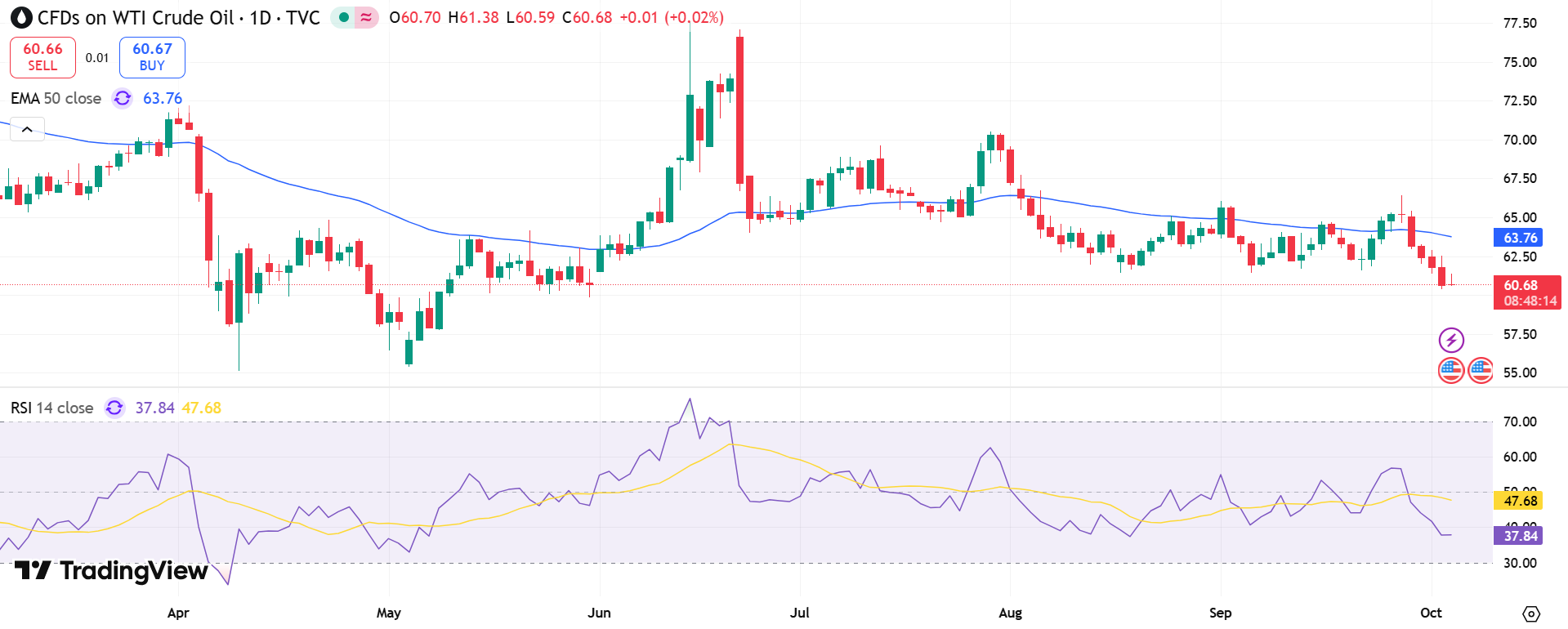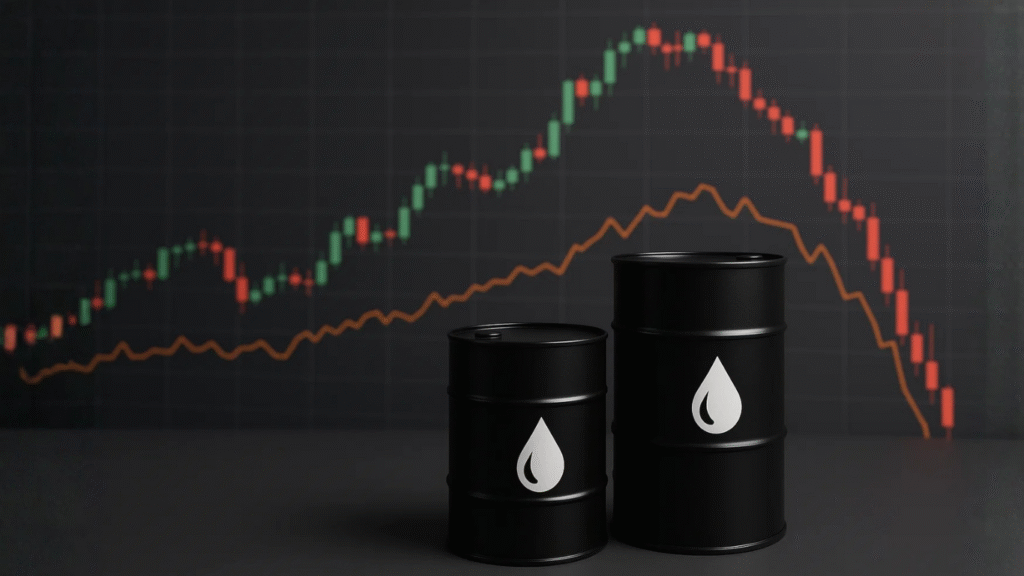Oil prices stabilized on Friday but remained on track for one of their steepest weekly drops this year, as traders weighed signs of weakening demand and the prospect of higher supply from OPEC+.
- Brent crude: $64.43 per barrel (+0.5%)
- WTI crude: $60.80 per barrel (+0.53%)
- Weekly change: Brent down 8.1%, WTI down 7.5%
The modest recovery followed three days of selling as investors positioned ahead of this weekend’s OPEC+ discussions. UBS analyst Giovanni Staunovo described sentiment as “wait-and-see,” noting that Friday’s bounce was likely tied to broader risk appetite rather than fundamental strength.
OPEC+ May Boost Supply
Sources told Reuters that eight OPEC+ members are considering raising output in November by 274,000–411,000 barrels per day, two to three times October’s increase. Saudi Arabia is reportedly pushing for higher production to recapture market share.
At the same time, seasonal demand weakness and refinery maintenance are expected to weigh on consumption.
Analysts flagged key risks:
- Rystad Energy: demand indicators softening as summer ends.
- JPMorgan: September marked a turning point toward a Q4 surplus.
- Oversupply outlook: fundamentals tilting bearish into 2025.
Janiv Shah of Rystad Energy warned that the oversupply narrative is gaining momentum, while JPMorgan analysts said the market is “heading towards a sizeable surplus” into next year.
Refinery Fire Adds Limited Impact
Elsewhere, a fire broke out overnight at Chevron’s El Segundo refinery, one of the largest on the U.S. West Coast with a capacity of 290,000 barrels per day. Local officials said the blaze was contained to one area, and it was unclear whether output had been affected.

Market analysts, however, downplayed the broader implications:
- Tamas Varga of PVM: West Coast supply is isolated from the wider U.S. network.
- Ole Hansen of Saxo Bank: impact may be limited to California gasoline prices.
While the incident briefly caught traders’ attention, its effect on crude benchmarks was muted.
Oil markets now face a pivotal weekend, with OPEC+ deliberations set to determine whether production increases will deepen an already bearish supply outlook. Traders remain focused on whether demand can stabilize enough to offset mounting signs of oversupply.


